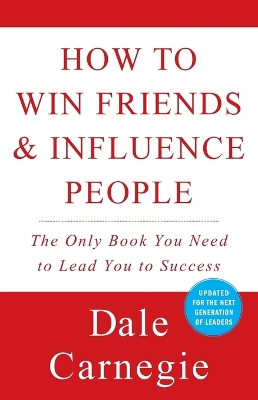Reviewed by Briana @ Pages Unbound on
The book is divided into four main categories:
Fundamental Techniques in Handling People
Six Ways to Make People Like You
How to Win People to Your Way of Thinking
Be a Leader: How to Change People without Giving Offense or Arousing Resentment
Each part does have specialized suggestions, but some parts do overlap. The general trend of the book is "make people feel important" and "make them see what benefit they would get from listening to you." A lot of this, then, is advice geared towards employers (how to get more productive workers) and salespeople (how to get people to to buy your product), though Carnegie does make a point of giving examples of how people used the techniques to improve their personal lives, such as having more productive conversations with their spouses or children or getting someone to renegotiate a bill they owe. And some advice is just genuinely good ideas if you do want friends or want to be thought as a pleasant person at gatherings: remember people's names, show interest in them and their interests, try to see things from their point of view before becoming argumentative, etc.
However, even though Carnegie includes anecdotes from women who implemented the techniques to get what they want, i do feel the book is largely from a male point of view. Carnegie makes all types of suggestions that will probably contribute to the problems that many women currently complain about facing in today's workplace: people take credit for their ideas, people think they're pushovers, etc. Carnegie specifically advocates never telling people directly that they are wrong, using "I feel" or "I believe" statements so as to avoid confrontation, and occasionally letting people take your ideas and think they are their ideas if it gets the job done. Some of these approaches could be reasonable in short interactions (ex. trying to sell someone you're not going to see that often a product), but I would hesitate at implementing it long term myself.
The book is also largely anecdotal, which I think is often what makes nonfiction interesting. but I believe that a similar book published today would take a more scientific approach, probably citing studies and research that has been done on what makes people think the way they do, what motivates them to change their mind on a topic, etc. I would have loved to see surveys, statistics, studies, etc. here.
Bottom line: There are definitely things to learn in this book. For instance, if you're that guy who talks over everyone and always brags about his own accomplishments, this book could definitely be eye-opening to you with its suggestions that you should actually express interest in other people and stop talking about yourself all the time. It can probably help you reconsider how to motivate reluctant workers or children. But I do think there are times you need to be firm with people, acknowledge their faults, etc., and this book does not fully address these issues because it's so busy suggesting that readers be constantly pleasant.
Reading updates
- Started reading
- 24 March, 2017: Finished reading
- 24 March, 2017: Reviewed
